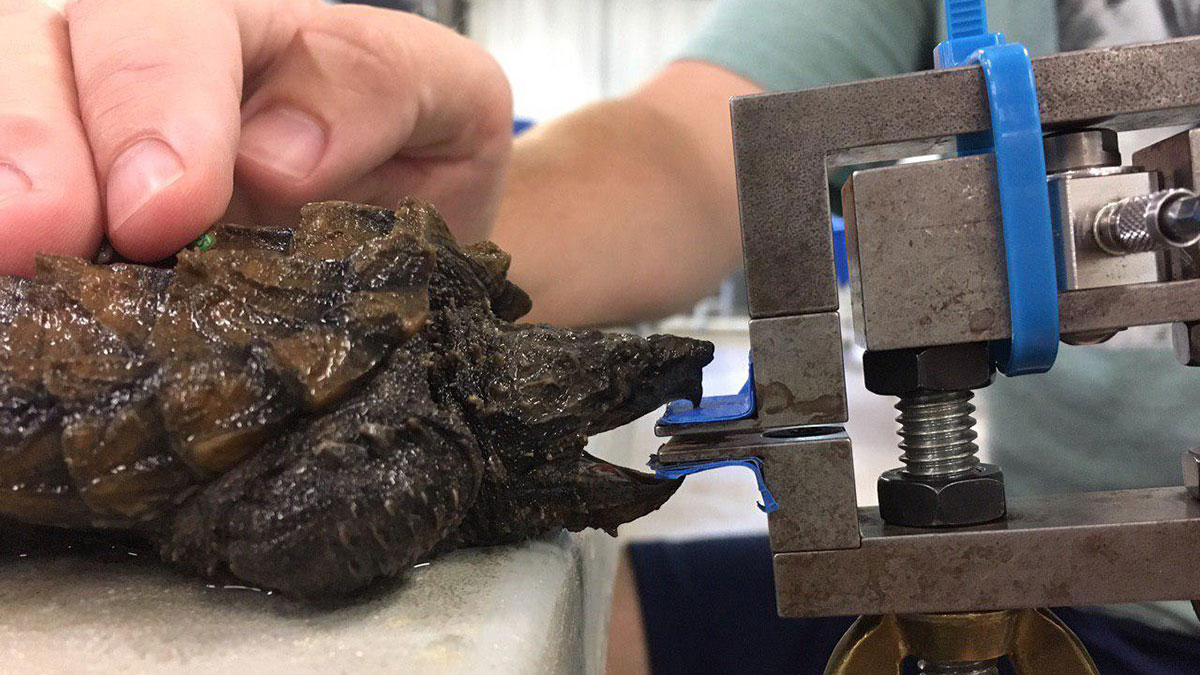Good breeding is important, even for turtles.
In the midwest, the alligator snapping turtle became trapped to near extinction decades ago.
Since then, the United States Fish and Wildlife Service has attempted to restore the turtles’ populations in captive breeding programs.
These programs’ facilities often serve as only temporary homes for the declining turtles. Most will return to the wild.
Biology graduate student Ashley Gagnon studies how captive breeding practices influence alligator snapping turtles’ ability to survive when released into the wild.
Gagnon recently received the Howard McCarley Student Research Award from the Southwestern Association of Naturalists for her research efforts.
About her research
Alligator snapping turtles’ powerful jaws are among their greatest tools for survival.
The strength of their jaws stems from how quickly and forcefully they can bite.
“Bite performance in the forms of bite force and speed have a direct influence on the turtles’ survival in the wild,” Gagnon said.
She compares the bite capabilities of captive and wild alligator snapping turtles under her advisor Dr. Day Ligon.
Gagnon studies the influence of head-starting, which occurs when conservation facilities raise turtles in captivity.
About the importance
Head-starting programs serve to protect alligator snapping turtles at their most vulnerable stage.
But to survive in the wild, captivity bred turtles must learn how to protect themselves.
“We still don’t know to what extent turtles bred in captivity are able to perform when released,” Gagnon said.
Gagnon examines turtles at a breeding facility in southern Oklahoma.
She compares their biting skills to head-start released turtles re-captured in Northern Oklahoma.
“If bite speed or force is significantly lower than in wild ones, captive breeding programs may need to re-evaluate their practices to better prepare the turtles they release for life in the wild,” Gagnon said.

